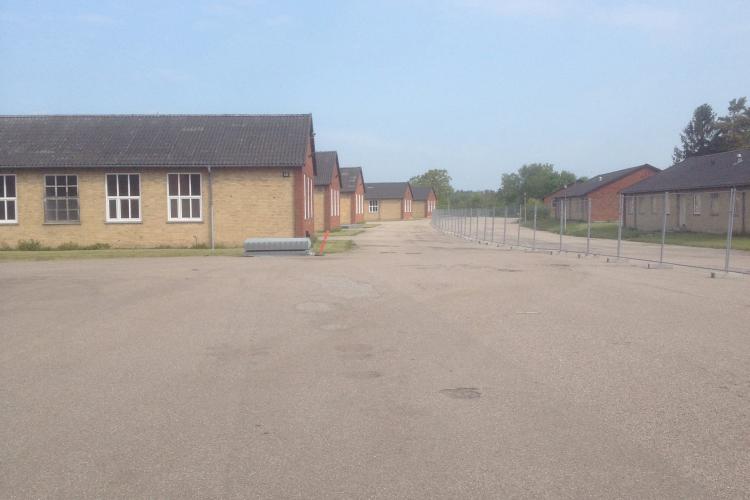The ‘Mysterious’ Configuration of Open Immigration Removal Centres: A New Politics of Abandonment?
Posted:
Time to read:
Post by Annika Lindberg, PhD Candidate at the Institute of Sociology, University of Bern. Her doctoral project focuses on the everyday management of rejected asylum-seekers in Denmark and Sweden. Using ethnographic methods, she explores control practices in asylum and immigration removal centres. Annika is on Twitter @Elinannika. This is the fourth instalment of Border Criminologies’ themed series on 'Immigration Detention in an Era of Mass Mobility' organised by Mary Bosworth.
‘It’s a mysterious place. Our task here is not, like in detention, to minimize the negative consequences of confinement. On the contrary, the negative consequences are an implicit part of the construction of these centres. People are supposed to leave, but instead they get stuck here’.
These words by a staff member describe the confusing purpose of the semi-open Danish departure centres, a new institutional configuration intended to house rejected asylum-seekers who, following a final asylum rejection, either cannot or will not leave the country. These measures that exist alongside immigration detention, seek to ‘motivate’ asylum-seekers to return and enhance the speed, efficiency, and rate of removals.
During the spring and summer of 2016, I conducted three months’ part-time fieldwork in two departure centres. As of yet, little research has concentrated on these centres. In this blog post I will share some of my early findings, which suggest that the centres form part of a politics of selective ‘non-recording’ and abandonment of ‘unwanted’ individuals who nonetheless remain on the state’s territory.
The heated political debate surrounding groups of ‘undeportable’ individuals stands in sharp contrast to the idleness of everyday life in the departure centres, located in the Danish hinterlands in former prison and military facilities. Sjælsmark departure centre, where I conducted field research, was described to me by staff and residents as ‘a buffer zone’, ‘no man’s land’, ‘centre of hopelessness’, or ‘suspended life’. It is operated by the prison and probation service, which also runs immigration detention. Similar to what Mary Bosworth, Thomas Ugelvik and others have found in their research in immigration detention centres, staff members have difficulties making sense of their role, notably as they lack the mandate to use force and sanctions, and are not allowed to offer any activities for residents. As one prison officer put it, ‘we were given this task for a reason, we just don’t really know what this reason is’.
The presence of prison officers in uniforms, daily police patrols, and lack of activities or routines in the centre are part of the ‘motivating techniques’ intended to encourage voluntary returns. Yet, instead of leaving the country, an increasing number of individuals absconds, either before or after arriving in the centres. Others remain and continue their severely circumscribed lives in the country under constant fear of deportation. Due to their lack of legal status, they are banned from pursuing education, work, and have limited access to health care.
What is puzzling about these centres is that the absence of control is as tangible as its presence. As suggested by Barak Kalir and Willem van Schendel, abandonment or ‘desertion’ seems to better describe state strategies to manage a population that has been rejected and permanently excluded from state and society, but who nonetheless may well remain at its fringes indefinitely unless they eventually agree to leave. Paradoxically, the lack of control also renders resistance, such as protests, difficult, as the staff can easily dismiss discontent: ‘if they are dissatisfied, they are free to leave anytime’. Human rights watchdogs and lawyers have in a few cases successfully argued that the restrictions imposed upon residents over time amount to disproportionate deprivation of freedom of movement and degrading treatment.

The departure centres in Denmark operate as financially, legally, and politically less costly alternatives to detention. They do not formally deprive rejected asylum seekers of their freedom of movement, but instead deny them of the possibility to pursue their lives in Denmark – or elsewhere in Europe. In contrast to detention, departure centres allow the state to keep ‘unwanted’ individuals out of sight for seemingly low costs for an indefinite period of time without overtly breaching human rights obligations.
The evasive control practices in Danish departure centres should draw our attention to how state practices to manage marginalised groups operate as much through abandonment and indifference as through coercion. They remind us that ineffective and incomplete immigration control enforcement is not necessarily the result of ‘state failure’ but an inherent product of state practices, with the result that control practices appear as ‘mysterious’ to officials tasked with enforcing them as to the individuals targeted.
Any comments about this post? Get in touch with us! Send us an email, or post a comment here or on Facebook. You can also tweet us.
__________
How to cite this blog post (Harvard style)
Lindberg, A. (2017) The ‘Mysterious’ Configuration of Open Immigration Removal Centres: A New Politics of Abandonment?. Available at: https://www.law.ox.ac.uk/research-subject-groups/centre-criminology/centreborder-criminologies/blog/2017/05/mysterious (Accessed [date])








